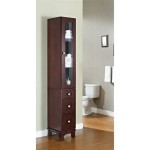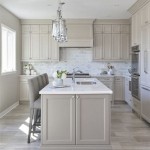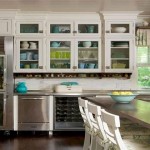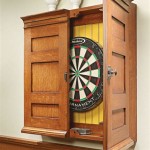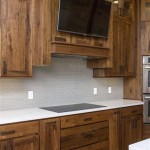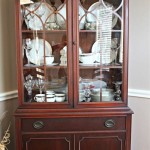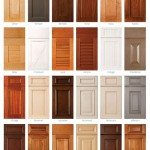What Color Paint Goes With Dark Kitchen Cabinets?
The kitchen, often considered the heart of the home, benefits significantly from thoughtful design choices. One critical element in kitchen aesthetics is the color palette, particularly the interplay between cabinetry and wall paint. Dark kitchen cabinets present a unique set of opportunities and challenges when selecting complementary paint colors. Understanding the nuances of color theory, lighting, and the specific shade of the dark cabinets is essential for creating a visually appealing and functional kitchen space. This article will explore various paint color options that harmonize with dark kitchen cabinets, providing insights into achieving different aesthetic goals.
Understanding the Impact of Dark Cabinets
Dark cabinets inherently possess a significant visual weight. They can anchor a space, adding a sense of solidity and sophistication. However, they also have the potential to make a kitchen feel smaller or darker, especially if the lighting is inadequate. Counteracting this effect with the right paint color is crucial. The goal is to strike a balance between highlighting the richness of the dark cabinets and maintaining a bright, inviting atmosphere.
The specific shade of the "dark" cabinets matters significantly. Colors like deep charcoal gray, espresso brown, navy blue, or even black each possess unique undertones. These undertones influence which paint colors will work best alongside them. For instance, a navy blue cabinet might pair well with warm grays or off-whites, while a charcoal gray could benefit from cooler-toned whites or light pastels. Before selecting a paint color, carefully analyze the undertones of the cabinets in natural and artificial light.
Furthermore, consider the existing elements within the kitchen, such as countertop materials, flooring, and hardware finishes. These elements should contribute to a cohesive and harmonious design. The paint color should not only complement the dark cabinets but also tie together the other components of the kitchen.
Exploring Light and Neutral Paint Color Options
Light and neutral paint colors are often the safest and most versatile choices for kitchens with dark cabinets. They effectively reflect light, counteracting the darkness of the cabinets and creating a brighter, more spacious feel. Within this category, several options offer distinct aesthetic qualities.
White: A classic choice, white paint provides a clean and crisp contrast against dark cabinets. However, the term "white" encompasses a vast spectrum of shades. A pure, stark white can create a modern and minimalist look, while softer, warmer whites with subtle yellow or beige undertones can offer a more inviting and comfortable atmosphere. Consider the specific undertones of the cabinets when selecting a white; a cool-toned white might clash with warm-toned dark cabinets.
Off-White: Off-white paints, such as cream, ivory, or eggshell, offer a slightly softer alternative to pure white. These shades provide warmth and depth, creating a more inviting and less sterile feel. They work particularly well with dark cabinets that have warm undertones, such as espresso brown or dark cherry.
Gray: Gray paint offers a sophisticated and versatile option that bridges the gap between white and darker colors. Light grays with cool undertones can complement dark cabinets with cool undertones, while warmer grays with hints of beige or brown can work well with warmer-toned cabinets. Gray is a neutral color that can blend well with a variety of other color schemes present within the kitchen.
Beige: Beige paints provide a warm and earthy feel, creating a cozy and inviting kitchen space. They work particularly well with dark cabinets that have warm undertones, such as dark brown or cherry. Lighter beiges can help to brighten the space, while darker beiges can create a more dramatic and sophisticated look.
When selecting a light or neutral paint color, consider the light reflectivity value (LRV). LRV measures the percentage of light a paint color reflects, with higher values indicating greater reflectivity. Choose a paint with a relatively high LRV to maximize the light in the kitchen.
Incorporating Bold and Colorful Paint Options
While light and neutral colors offer a safe and reliable choice, bold and colorful paint options can inject personality and vibrancy into a kitchen with dark cabinets. However, careful consideration is required to avoid overwhelming the space or creating a clashing aesthetic. The key is to use color strategically and in moderation.
Light Blue: Light blue paired with dark cabinets evokes a sense of calm and serenity. This pairing can be reminiscent of coastal or nautical themes, especially when combined with white accents and natural materials. Muted shades of light blue, such as powder blue or sky blue, tend to work best.
Sage Green: Sage green offers a subtle and earthy pop of color that complements dark cabinets beautifully. It introduces a touch of nature into the kitchen, creating a refreshing and inviting atmosphere. Sage green works particularly well with cabinets that have warm undertones and can be paired with natural wood accents.
Pale Yellow: Pale yellow paint can bring a sense of sunshine and cheerfulness to a kitchen with dark cabinets. Choose a soft and muted yellow to avoid overwhelming the space. Pale yellow works well with cabinets that have warm undertones and can be complemented by white or cream accents.
Accents Walls and Color Blocking: Instead of painting the entire kitchen a bold color, consider using it as an accent wall or for color blocking. Painting a single wall a vibrant color can create a focal point and add visual interest without overwhelming the space. Color blocking involves painting different sections of the wall in contrasting colors, creating a modern and artistic effect. These techniques allow incorporation of bold colors while maintaining a balanced aesthetic.
When using bold or colorful paint, ensure it complements the other elements in the kitchen, such as countertops, flooring, and hardware. Consider using complementary colors or analogous colors from the color wheel to create a harmonious palette.
Considering Undertones and Finishes
Beyond the basic color choice, understanding undertones and paint finishes is critical for achieving the desired aesthetic. Undertones are the subtle hues that underlie a paint color, influencing how it appears in different lighting conditions and alongside other colors. Paint finishes, such as matte, eggshell, satin, semi-gloss, and gloss, affect the paint's sheen and durability.
Identifying Undertones: To identify the undertones of a paint color, compare it to a pure white swatch under different lighting conditions. For example, a gray paint might appear to have a blue, green, or purple undertone when compared to white. Similarly, a white paint might have yellow, pink, or beige undertones. Understanding these undertones is essential for selecting colors that complement the cabinets.
Complementing Undertones: Pair warm-toned dark cabinets (e.g., brown, cherry) with paint colors that also have warm undertones, such as warm whites, creams, beiges, or warm grays. Conversely, pair cool-toned dark cabinets (e.g., navy, charcoal gray) with paint colors that have cool undertones, such as cool whites, cool grays, or light blues.
Choosing the Right Finish: The appropriate paint finish depends on the location within the kitchen and the desired level of durability. Matte finishes offer a low sheen and are good for hiding imperfections, but they are less durable and harder to clean. Eggshell and satin finishes offer a slight sheen and are more durable than matte, making them suitable for walls. Semi-gloss and gloss finishes are highly durable and easy to clean, making them ideal for trim, doors, and backsplashes. For kitchens, eggshell or satin finishes are generally recommended for walls, while semi-gloss or gloss finishes are suitable for trim and areas that require frequent cleaning.
Sampling paint colors in the actual kitchen space is crucial before making a final decision. Lighting conditions can significantly affect how a paint color appears. Paint large swatches of several different colors on the walls and observe them throughout the day and evening to see how they look under natural and artificial light. This allows assessment of how the colors interact with the dark cabinets and other elements in the kitchen.

11 Ideas For Dark Kitchen Cabinets Paintzen

11 Ideas For Dark Kitchen Cabinets Paintzen

14 Amazing Color Schemes For Kitchens With Dark Cabinets

Kitchens With Dark Cabinets Kitchen Paint Colors

11 Ideas For Dark Kitchen Cabinets Paintzen

Best Paint Colors For Kitchens With Dark Cabinets Jenna Kate At Home

14 Amazing Color Schemes For Kitchens With Dark Cabinets

11 Ideas For Dark Kitchen Cabinets Paintzen

11 Ideas For Dark Kitchen Cabinets Paintzen

Kitchens With Dark Cabinets Kitchen Paint Colors
Related Posts

